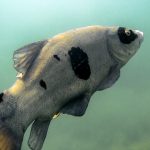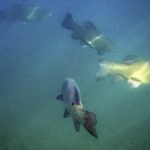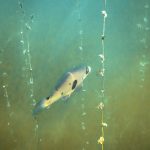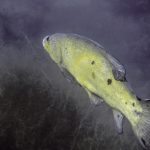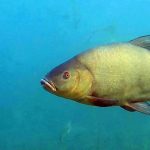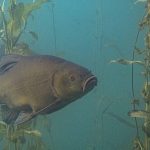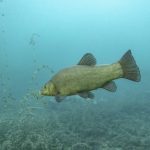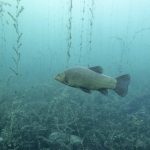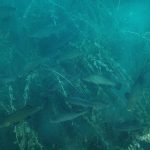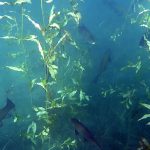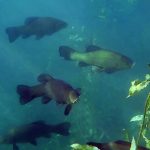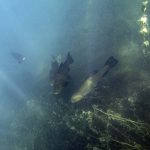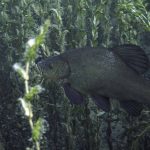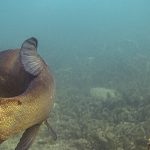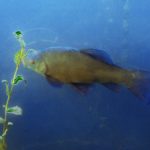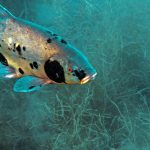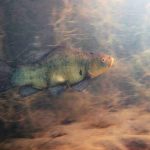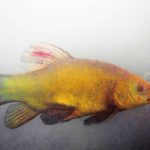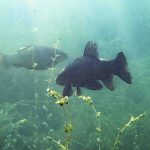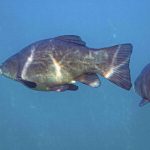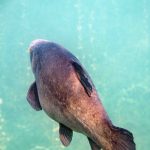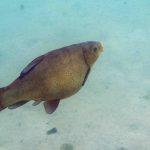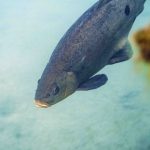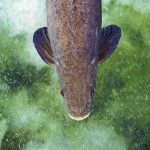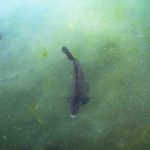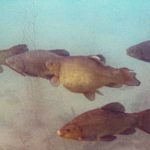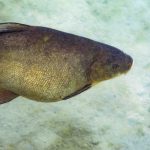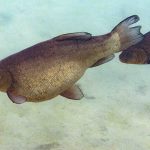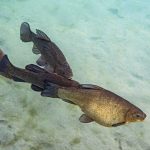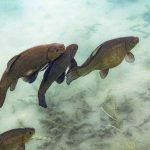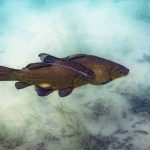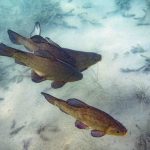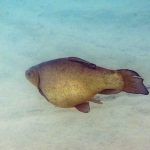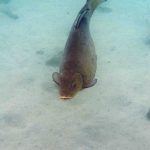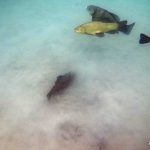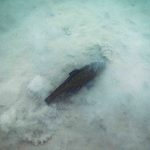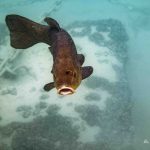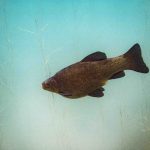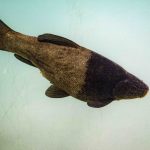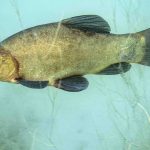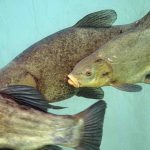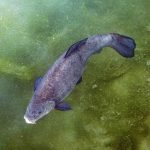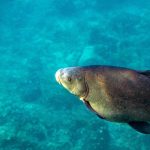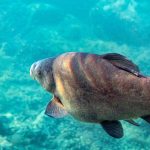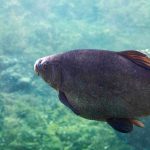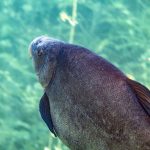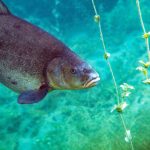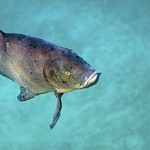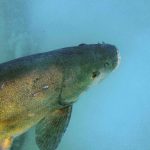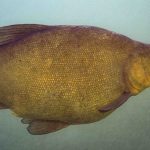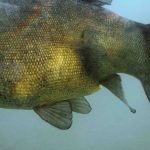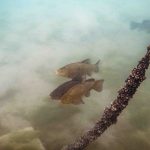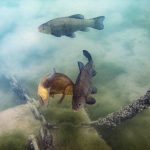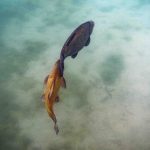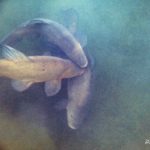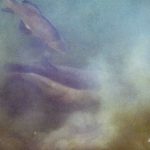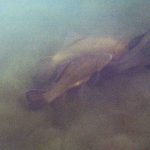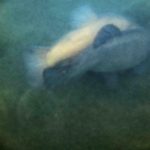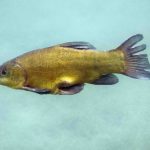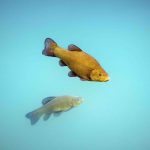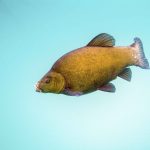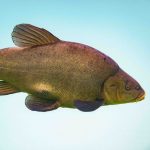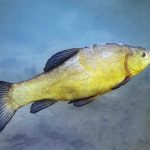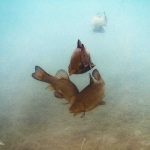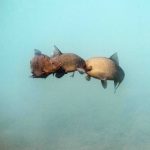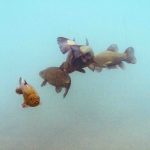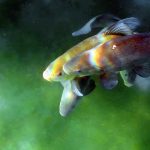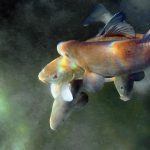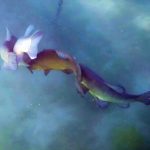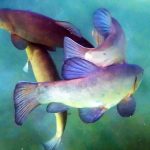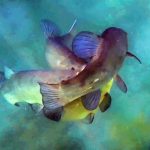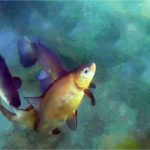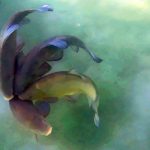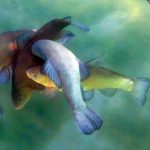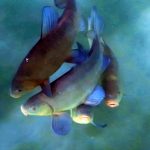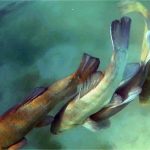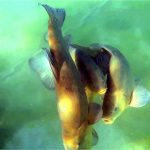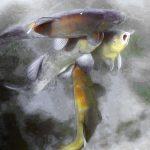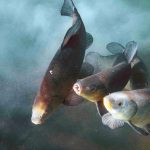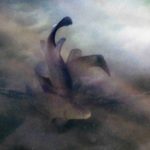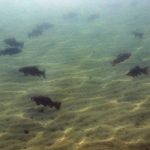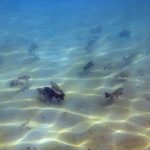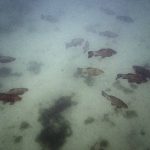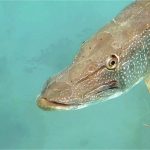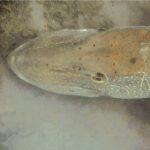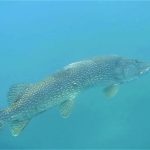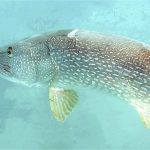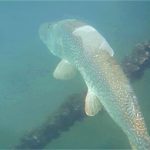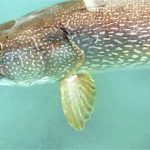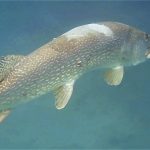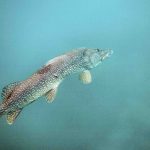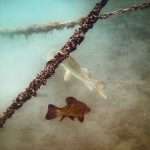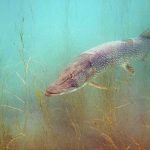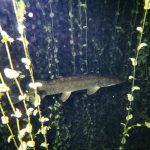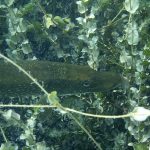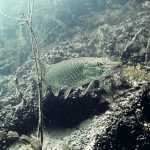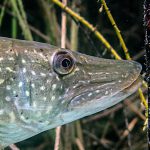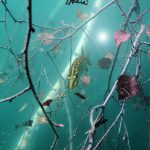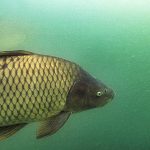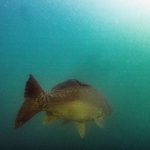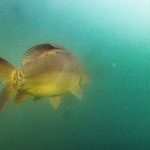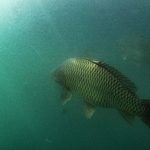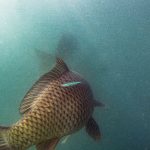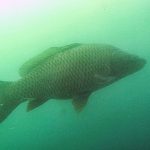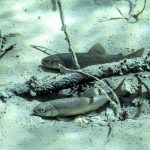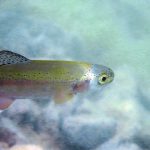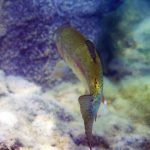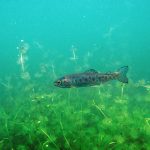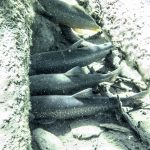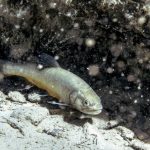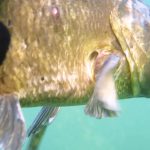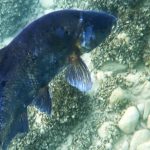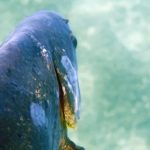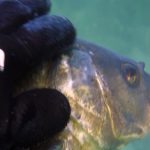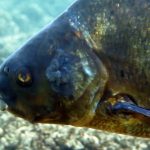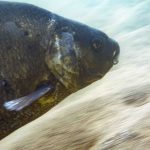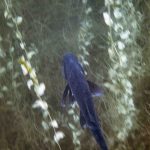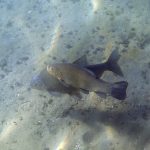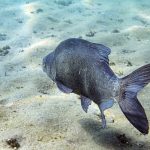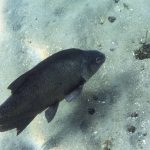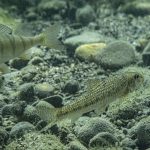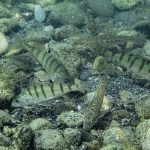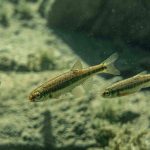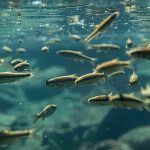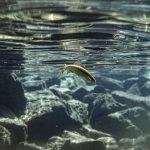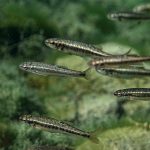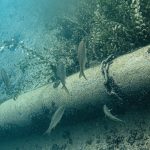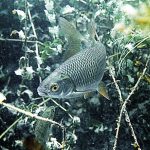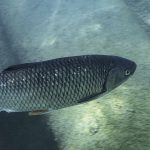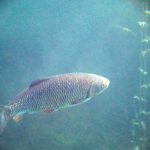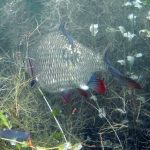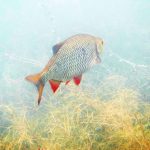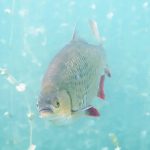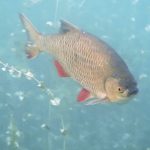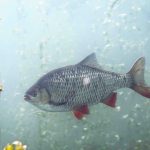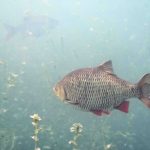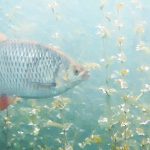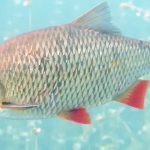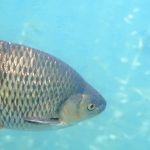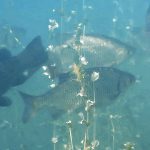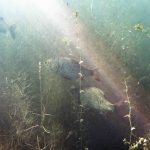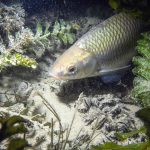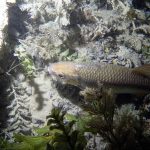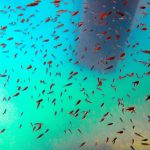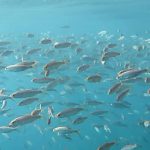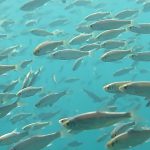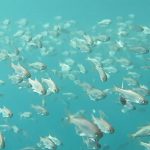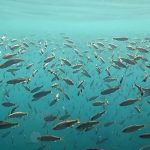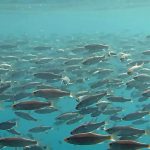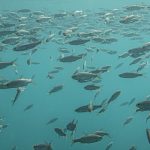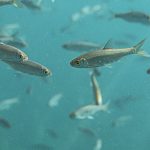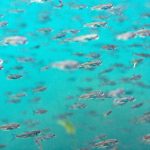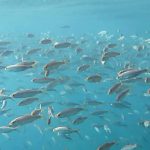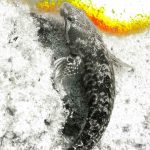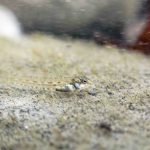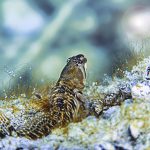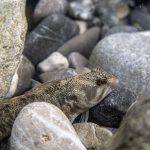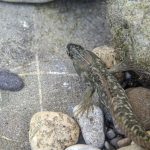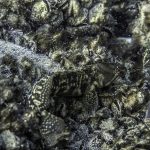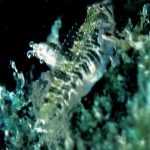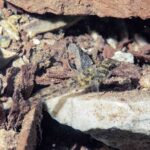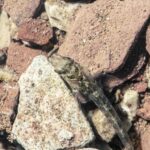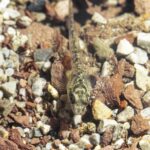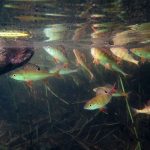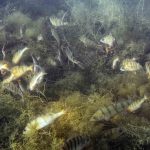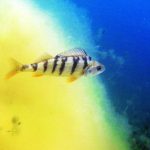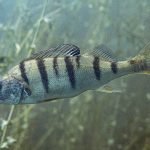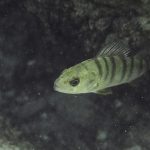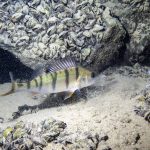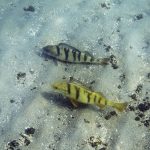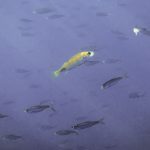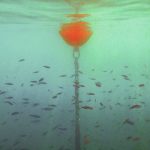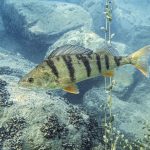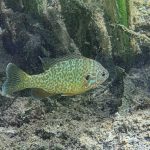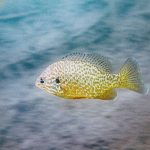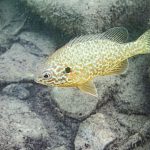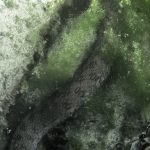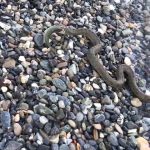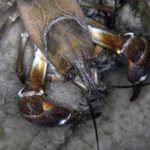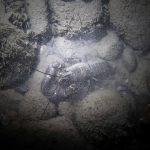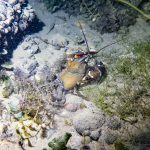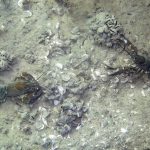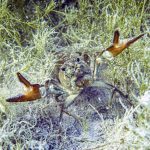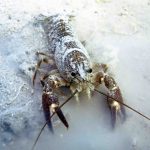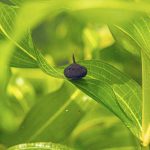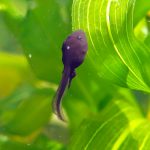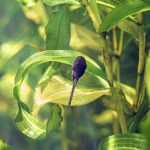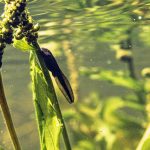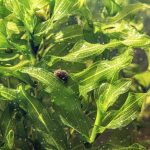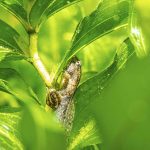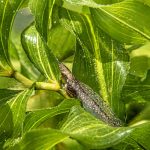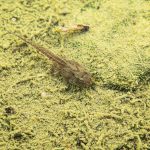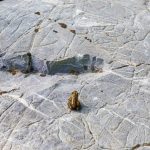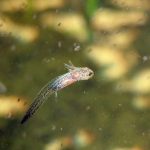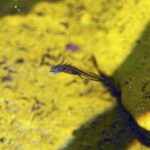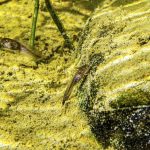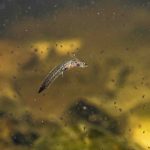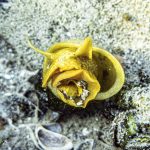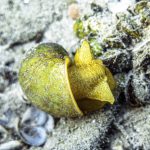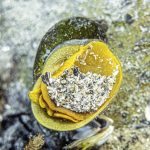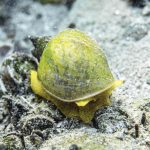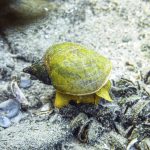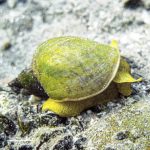
Nadia is a fond apneist both in seas and lakes and has a special love for the Léman, the biggest lake in Western Europe and a treasure for Switzerland fish biodiversity. Nadia regularly exchange information with researchers and is always happy to provide pro-bono time to study fishes. She has been a volunteer fish monitor in Switzerland for years, providing data on fish location and behavior in various lakes. Nadia freedives all year round with a colony of tench (Tinca tinca) in the UNESCO Heritage site of Lavaux since many years having learnt to interact with them as if she was a fish member. The tench is a common though not well known lake fish that displays complex social behavior. It is not used for human consumption in Switzerland since the middle age and the country prohibits animal cruelty such as the practice of game fishing. Thus while the tench is a naturally suspicious fish avoiding humans, the fact that there is no history of predation between our two species provides a privileged environment to explore how relationships can grow on a trust base. The fact that tench are estimated to be able to live up to 35 years in the absence of predators is a great contributor in building on the memory of past interactions as well as showing younger fish members the attitude to adopt in Nadia’s presence. Many fishes now trust her and thus act naturally in her presence, others are still shy. By now some appreciate her company and greet her, others consider her as dating material during mating season independently of their gender, and attempt to attract her attention. Other species of fishes witnessing this special interaction, understand they can relax and let her approach them equally. It is a case for a small colony of Gardons (Rutilus rutilus) of unprecedented size, giant female pikes (Esox Lucius) which she sometimes accompanies in the day resting or in the night hunting, as well as a grandma Bream (Abramis brama), which she can pat. Spring and summer are special season as with the hormones up at the reproduction period, fishes look for interaction. In autumn she witnesses large gathering of her colony in one site preparing for their wintering in the depth of the lake where she can’t follow them. However with climate change, some years have seen the fishes remaining closer to the surface than before.
Fishes intelligence and emotions have been too much neglected out of our tendency for anthropomorphism and possibly their limited scope of face expressions. However fishes dispose from a very varied body language and use eye contact very much in the same way as us. They place a great importance in coming closer and eye to eye to recognize a person or another fish and unfortunately intercalating a camera is negatively experienced. This is why in Nadia’s videos she needs to lower the camera to remove the obstacle and why the best moments are as always not on camera. Lake fishes are also very sensitive to sounds, the way of swimming and thanks to their lateral line, they have access to a number of information such as smell, pressure, etc which is still a domain of research. Gladly some research have shown now fishes incredible intelligence as for example the capacity to memorize up to 100 human faces. This interactive platform from Glasgow university is a fantastic way to learn about fishes capacities. And to learn more about fishes emotions and how they chose their partners, have a look as well at Chloé Labu work such as in this video or article.
In her digital painting and videos, Nadia doesn’t look for technicity or naturalist accuracy, nor does she has very fancy equipment to do so. On the contrary, she intends to restitute the emotions of the interactions and to engage the viewer to move his/her perception from an indiscriminate specie (or worse food focus) objectifying perception, to seeing the animals as individual, each one with its life story, character and relationships. Therefore she has gone beyond the classical scientific (almost freudian) approach to studying animals from a pseudo neutral observatory attitude, to actually integrate the colony and studying the fish in interaction with her, with each other and with other species of fishes. In a world were biodiversity is a threat and where paradoxically urban centers become niches for pockets of biodiversity, improving animal and human interactions and why not mutual learning are essential.
To reach this level of trust and relaxation in the presence of each other required many years. At least 2 years was spend simply learning fish body language, how to swim on the surface, how to breathe, how to descend, how to move the fins, reduce the sounds, how to approach, etc to be allowed to come closer. Another year was spent then learning the complex communication in group, as behavior needs to be adapted between a one to one interaction and when moving within large gathering. Again another year went studying the mating behavior and reaching a level where she can interact in the mating game. Finally now Nadia can just join, come to reaching distance and at times in physical contact with the fishes as a full fish member. At no point is food being used as it would biaise the a relationship that is in no way based on dependency but simply on friendship. There are setbacks too due to Nadia’s limitation to become a true fish such as holding breath capacity or covering the distances, sometimes long period of absence that require renewed approach efforts. However to become a fish member, like in any community in the world, doesn’t mean to be the same, it only means to be good enough so that others can place in us the functionalities of an individual in their society, the same way we give roles to people by entrusting them with expectations. As such, physically, Nadia’s face is recognize as a face with eyes and mouth, her fins are assimilated to a tail, her arms are inexistant (fishes are afraid of arms) and in her attitude, Nadia exploits a widespread behavior amongst fishes both from same and mix species to chose an individual to follow (there are many reasons why one or several fishes can follow an individual such as to help them get food, protection, bonding or mating, leadership, curiosity, etc…). Thus there is a great distinction between following a fish respectfully by being welcomed, invited or neutral, or to harass a fish which will then communicate it through its behavior. When done properly, the attitude counts more than the specie in which we belong. Nadia has tested this approach on various occasions with other large social fish species too such as Bumphead Parrotfishes or mantas.
Nadia’s special relationship to animals is not limited to fishes but to virtually all living beings and in particular parrots which she raised till unfortunately logistic constraints had her stop. Also, she can better swim than fly. Learning from one specie of animal came handy in understanding another as overtime through compassionate interactions, similarities appear clearer.
With the hope that those images will speak better than words.
You can see YouTube videos on Nadia’s dedicated channel.
Check also NadiaZ Ecosystem Stories and Visual Experiences.
Tench (Tinca tinca) portraits:
Tinca tinca Colony Love stories in Léman Lake (also see on YouTube):
Tench (Tinca tinca) wintering large gathering:
Pikes (Esox Lucius) Portraits:
Carps Portraits:
Trouts Portraits:
Common Bream (Abramis brama) Portraits:
Goujon (Gobio gobio) Portraits:
Vairon (Phoxinus phoxinus) Portraits:
Chevesne (Squalius cephalus) Portraits:
Roach (Rutilus rutilus) and Rudd (Scardinius erythrophthalmus) Portraits:
Bleak (Alburnus alburnus) Portraits:
Freshwater blenny (Salaria fluviatilis) Portraits:
Perca (Perca fluviatilis) Portraits:
Viperine Snake (Natrix maura) Portraits (harmless):
Crayfish Portraits:
Frogs,Toads & Tadpoles Portraits:
Newts Portraits:
Snails Portraits (Radix labiata):

